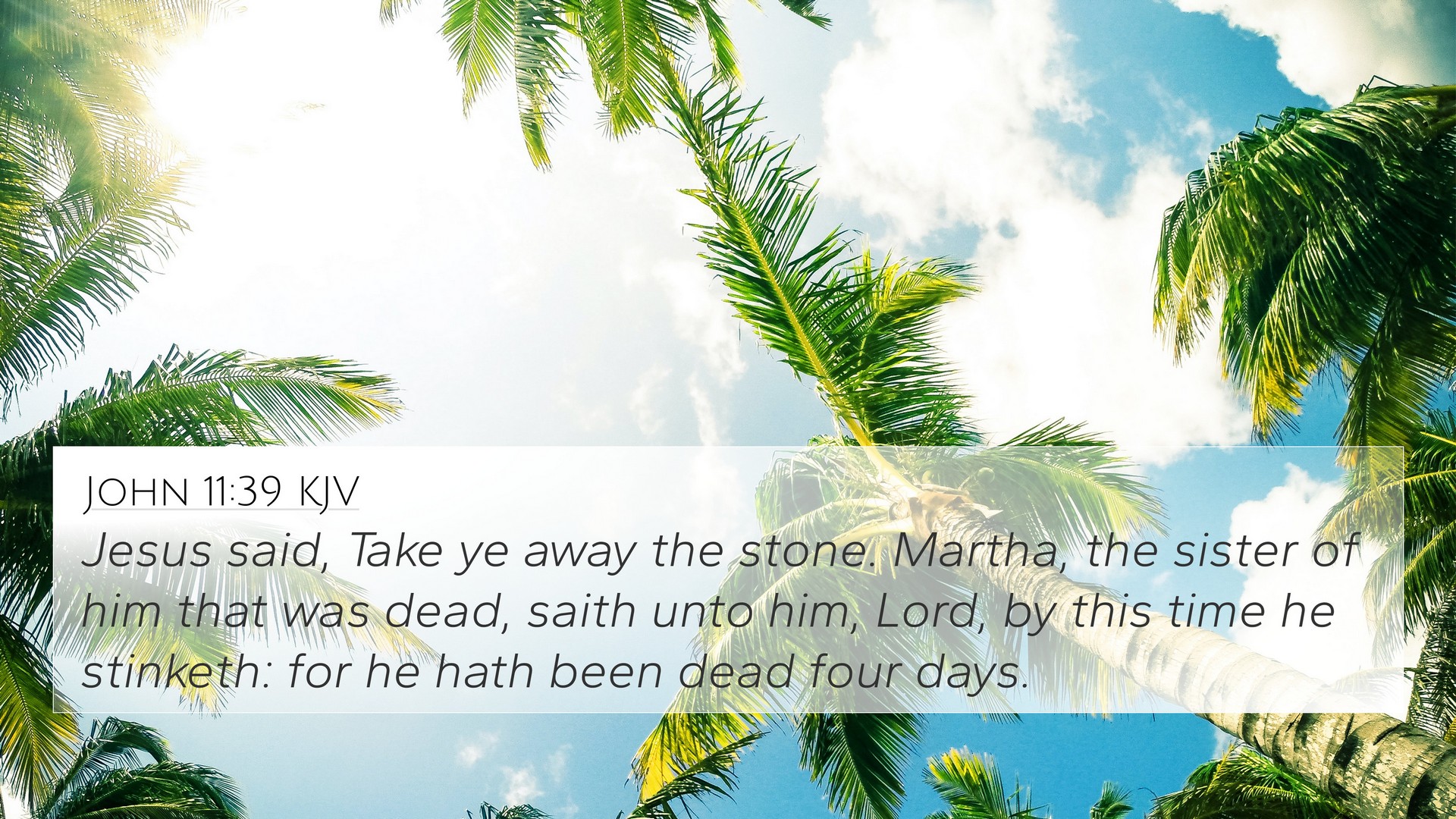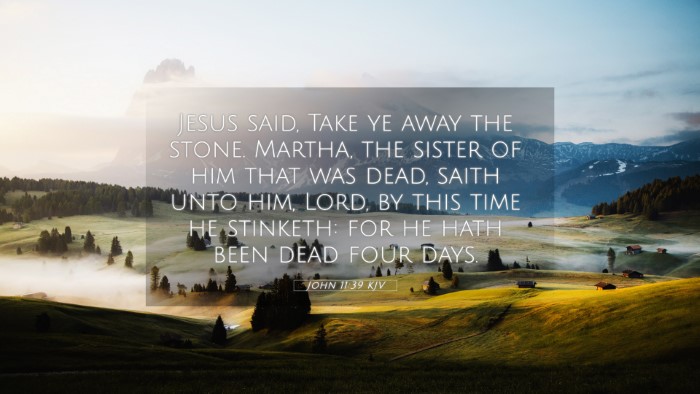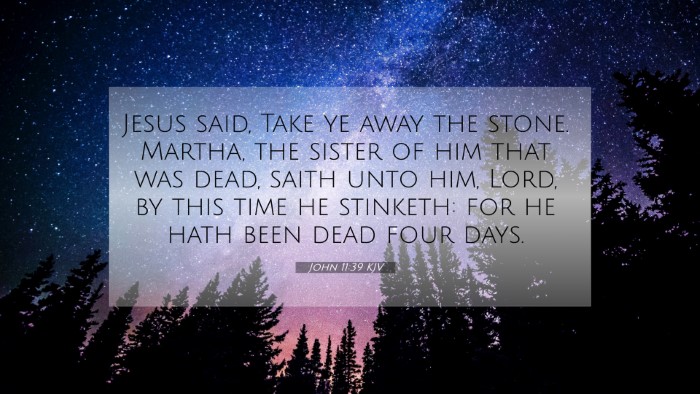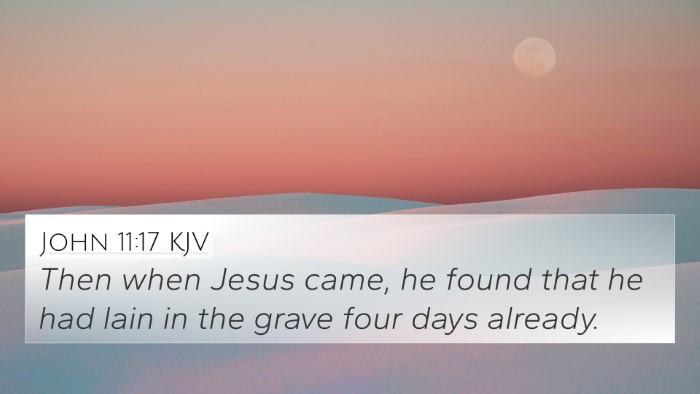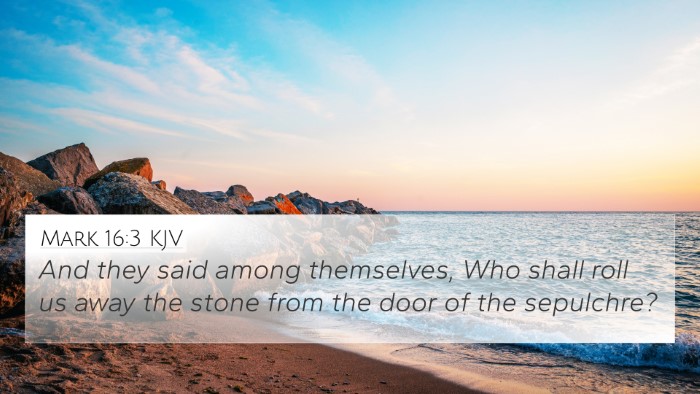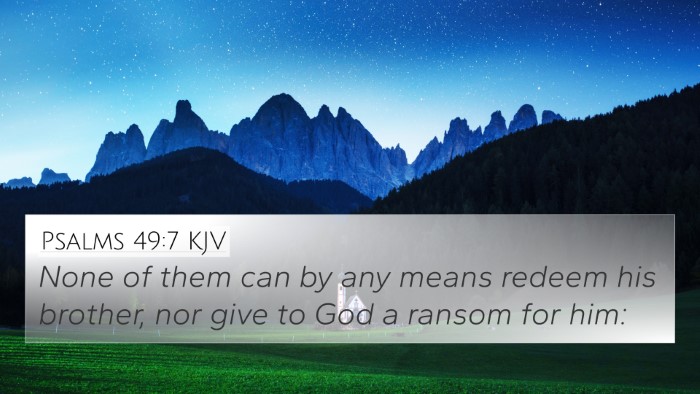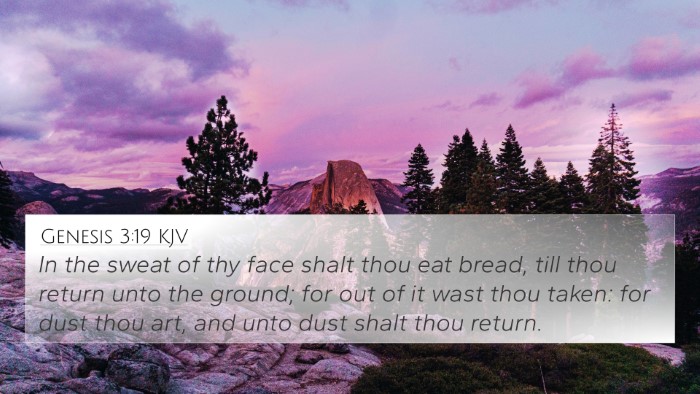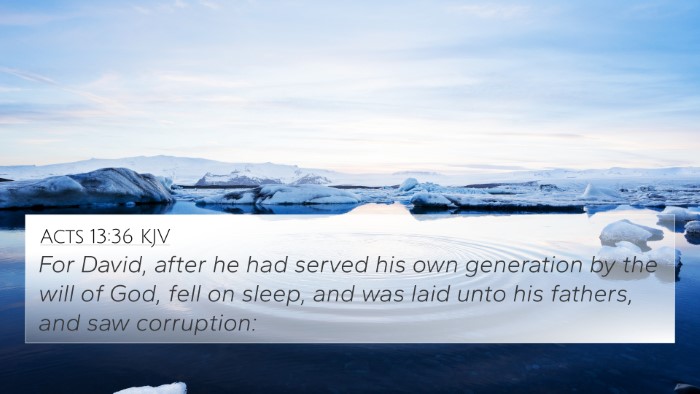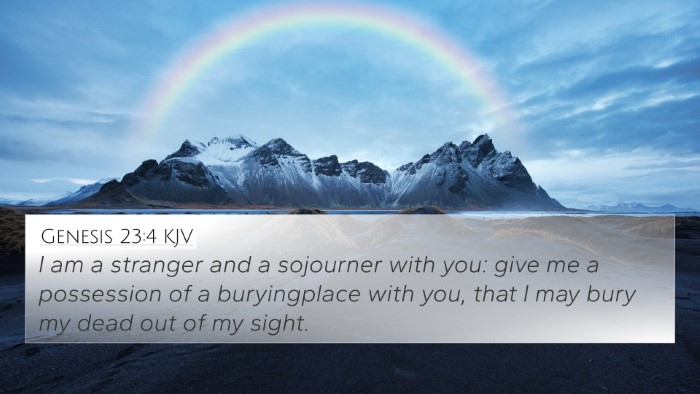Understanding John 11:39
John 11:39 states: “Jesus said, Take ye away the stone. Martha, the sister of him that was dead, saith unto him, Lord, by this time he stinketh: for he hath been dead four days.” This verse follows the story of Lazarus, who was raised from the dead by Jesus. It addresses themes of faith, doubt, and the power of Christ over death.
Meaning and Interpretation
The request of Jesus to remove the stone symbolizes the necessity for human participation in divine action. This verse reveals Martha’s hesitations, demonstrating a clash between belief and the stark reality of death. In the public domain commentaries, we find multiple insights.
Matthew Henry's Commentary:
- The act of removing the stone signifies faith’s involvement in unveiling God’s power.
- Martha’s response highlights a common fear of decay and finality in death, illustrating human understanding’s limitations.
Albert Barnes' Notes:
- Barnes emphasizes the miraculous nature of Christ's command. He nudges the reader to reflect on the significance of Jesus’s authority over the grave.
- He points out that Martha, despite her faith, struggles with the potential odor resulting from decay, representing the conflict between human logic and divine expectation.
Adam Clarke's Commentary:
- Clarke discusses the cultural significance of burial practices, explaining that stones were used to seal tombs in Jewish tradition, thus emphasizing the impossibility of the situation without divine intervention.
- He also remarks on the prior resurrection of Lazarus as a foreshadowing of Jesus's own resurrection, linking the events to an overarching theme of hope and resurrection in the New Testament.
Cross-References and Related Scriptures
To better understand John 11:39, here are some Bible verses that relate to its themes:
- John 11:25-26: "Jesus said unto her, I am the resurrection, and the life: he that believeth in me, though he were dead, yet shall he live." - Highlighting the core theme of resurrection.
- Romans 8:11: "But if the Spirit of him that raised up Jesus from the dead dwell in you, he that raised up Christ from the dead shall also quicken your mortal bodies..." - Connecting the resurrection power to believers.
- 1 Corinthians 15:54-55: "So when this corruptible shall have put on incorruption, and this mortal shall have put on immortality, then shall be brought to pass the saying that is written, Death is swallowed up in victory." - Affirming victory over death.
- Luke 7:14-15: "And he came and touched the bier: and they that bare him stood still. And he said, Young man, I say unto thee, Arise." - Another instance of Jesus raising the dead.
- Hebrews 2:14: "Forasmuch then as the children are partakers of flesh and blood, he also himself likewise took part of the same; that through death he might destroy him that had the power of death, that is, the devil." - Theological implications on Jesus's power over death.
- John 5:25: "Verily, verily, I say unto you, The hour is coming, and now is, when the dead shall hear the voice of the Son of God: and they that hear shall live." - A foretelling of spiritual resurrection.
- Matthew 28:5-6: "And the angel answered and said unto the women, Fear not ye: for I know that ye seek Jesus, which was crucified. He is not here: for he is risen..." - Resurrection confirmed.
Thematic Connections and Insights
This verse and its surrounding context offer an opportunity to explore broader Biblical themes:
- The Theme of Faith vs. Doubt: Martha’s hesitation reflects a common struggle in the life of faith, where reality seems to contradict the promises of God.
- The Power of Speech: Jesus commands empathy and action through His words, emphasizing the significance of verbal declarations of faith.
- Transformation and New Life: The act of rolling away the stone symbolizes readiness to allow God's transformative work, a prelude to spiritual awakening.
Cross-Referencing and Spiritual Application
To deepen understanding and application of John 11:39, utilizing Bible cross-reference guides can enhance one’s study. Here are helpful ways to engage:
- Finding Related Verses: When exploring scripture, use a bible concordance or bible cross-reference system to uncover verses connected to themes like resurrection, faith, and doubt.
- Comparative Bible Verse Analysis: Analyze how different scriptures address similar themes. For instance, examining the parallels between Jesus’s miracles and the teachings of the prophets enriches understanding.
- Inter-Biblical Dialogue: Engage with multiple scripture passages to see how they illuminate each other, creating a tapestry of biblical truths that can reshape personal faith journeys.
Conclusion
In summary, John 11:39 not only reflects a powerful moment in the life of Jesus but also serves as a catalyst for exploring deep theological themes. It invites believers to confront their doubts and recognize the resurrection power of Christ, forging a connection between fear, faith, and divine intervention. Utilizing tools for cross-referencing and thematic analysis enriches our understanding and commitment to Scripture.
